Many people regard Saturn as the most beautiful object in the entire sky, and observing the planet with a telescope is one of astronomy's most satisfying treats.
This is certainly my view: when seen through an adequate telescope against a dark sky, there is nothing to match the glory of Saturn.
True, other planets have ringed systems, but these are dark and obscure, and in no way comparable with the brilliant icy rings of Saturn.
Discover our pick of the best telescopes for observing the planets
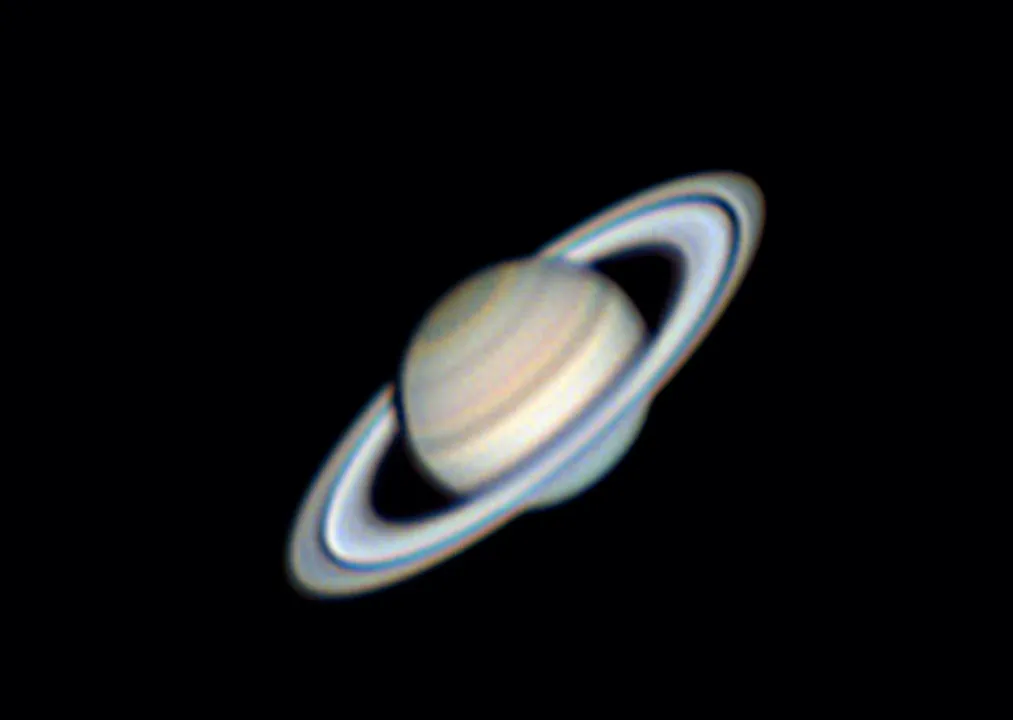
With the naked eye, Saturn looks stellar; at its best it is brighter than any star apart from Sirius.
It is slightly yellowish, and the ancients regarded it as baleful.
Binoculars will show that there is something unusual about its shape.
In this guide we'll go through our top tips on observing Saturn with a telescope and what you can expect to see, particularly if Saturn is at opposition.
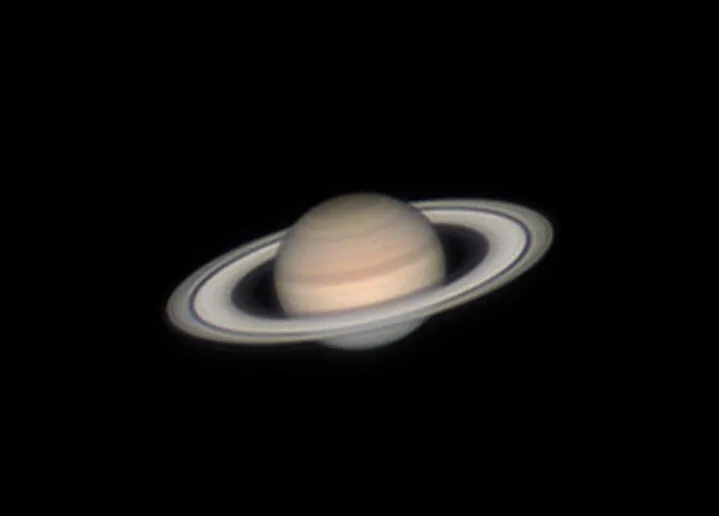
Dmitry Ardashev, Zaprudnya, Moscow region, Russia, 26 July 2021
Equipment: ZWO ASI462MC camera, TS-Optics UNC 10-inch Newtonian, Sky-Watcher EQ6-R mo
4 top tips for observing Saturn
1: Look for detail in the rings
In small telescopes (7–10cm aperture), the fine black line of the Cassini Division will be seen between rings A and B, while larger apertures (30cm+) may reveal the Encke Division in Ring A.
2: Collimate and cool down
If you’re using a mirror-based telescope, make sure it’s well collimated.
Also, ensure that your telescope is in thermal equilibrium with its surroundings.
Allow 30 minutes for a refractor and a couple of hours for a mirror-based scope to cool.
If you need to, use a hair dryer to gently remove moisture from optical surfaces.
3: Keep an eye on Saturn's atmosphere
Choose a night when the seeing is good. Look at a bright star close to Saturn though your telescope and defocus its image slightly.
If the image shudders and trembles badly, the seeing and your subsequent view of the planet will probably be poor.
4: Tweak your observing set-up
Larger apertures are better for detecting subtle planetary spots, while coloured (Wratten) filters may help visual observers see faint detail.
Start with modest magnifications, then increase the power until you’re at the highest that the seeing conditions will stand.
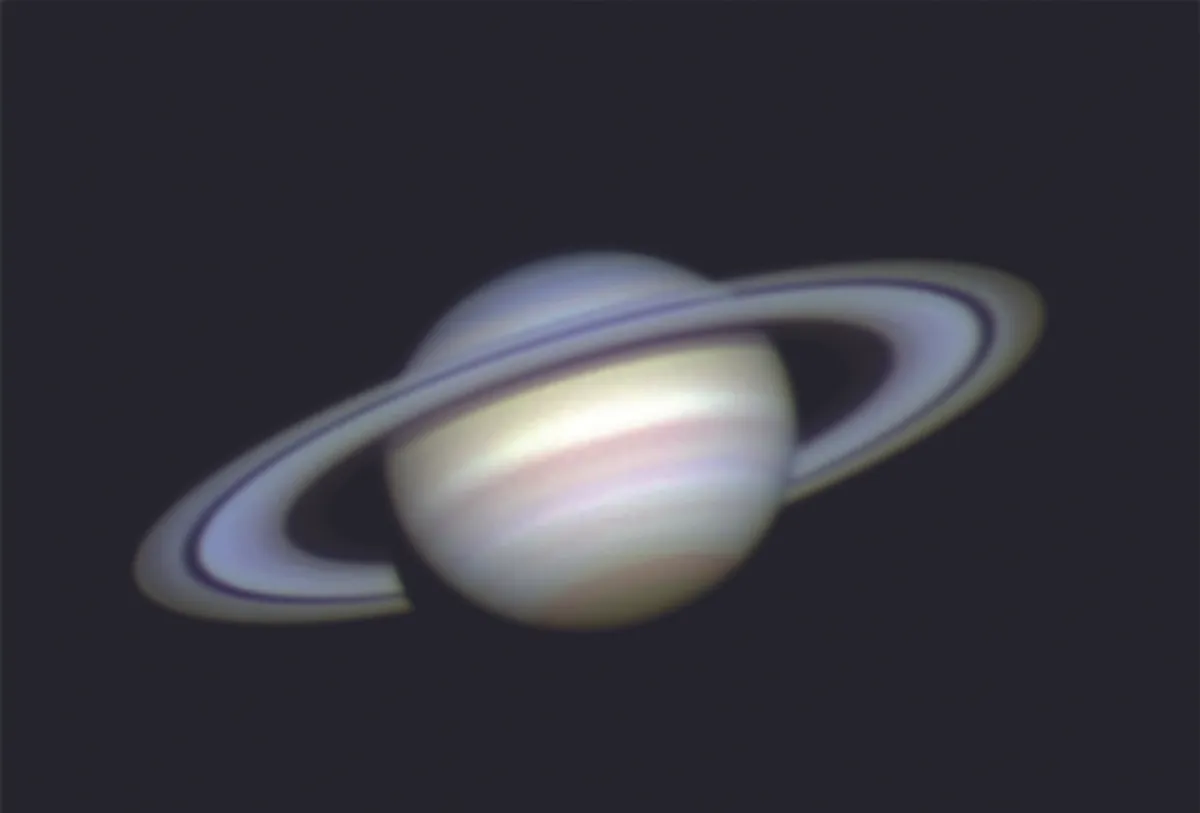
Observing Saturn's surface features
When observing Saturn through a telescope, the feature that will immediately stand out is the flattening of Saturn’s disk.
It is very obvious: the polar diameter is 7,500 miles (12,000km) less than the equatorial.
The belts are less striking than those of Jupiter and are sensibly curved.
The two equatorial belts, one either side of the equator, are always present, and are easy to observe unless covered up by the rings.
Several other belts are present, notably the north temperate and the south temperate belt.
Saturn’s polar regions are always dusky, and a greenish hue has often been recorded; it is always worth looking for the colours on Saturn, though they are never marked.
The equatorial zone is always brighter than the rest of the planet.
With sufficient aperture (over 12 inches) look for the strange ‘spokes’ in Ring B.
This is due to particles elevated away from the main plane by magnetic effects.
They were seen by observers long before the Voyager missions and with electronic equipment they are not hard to photograph.
(Note: since this article was published, Hubble's images of Saturn's ring spokes have revealed the features in great detail).
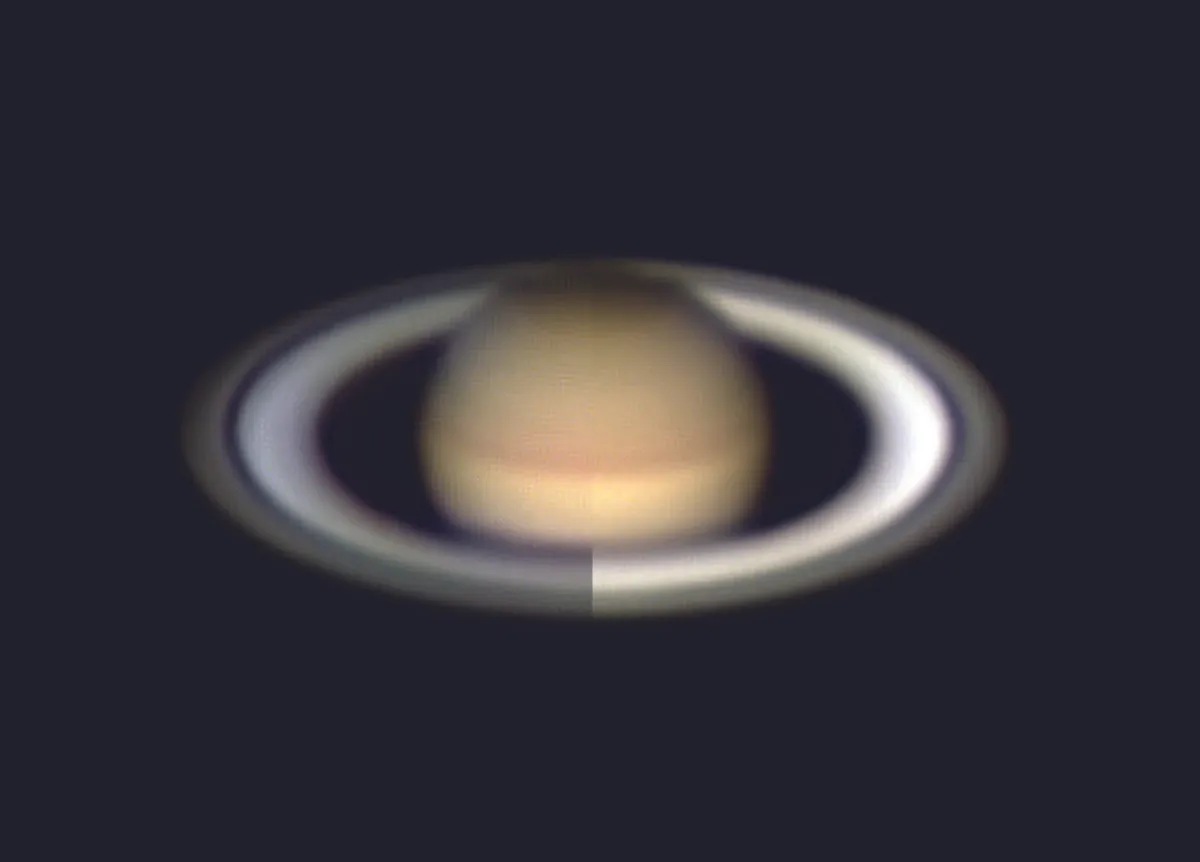
Observing and sketching Saturn's rings
Unlike Jupiter, Saturn is an awkward object to draw. One needs considerable artistic ability.
Use pre-prepared blanks – this is not cheating – and details can be filled in by direct observation.
You can download our Saturn Observing Form (PDF) to help
When the rings are well displayed, look first at the disk; draw the belts, and search for any unexpected features such as a white spot.
Then turn to the rings. With even a small telescope, such as a 3- inch (7.5cm) refractor, the Cassini Division should be easy to spot, together with indications of the Crêpe Ring.
Larger apertures bring out the Encke Division in the A Ring, which is much more elusive, but with a telescope of, say, 12-inch (30cm) aperture, this should not be difficult to see.
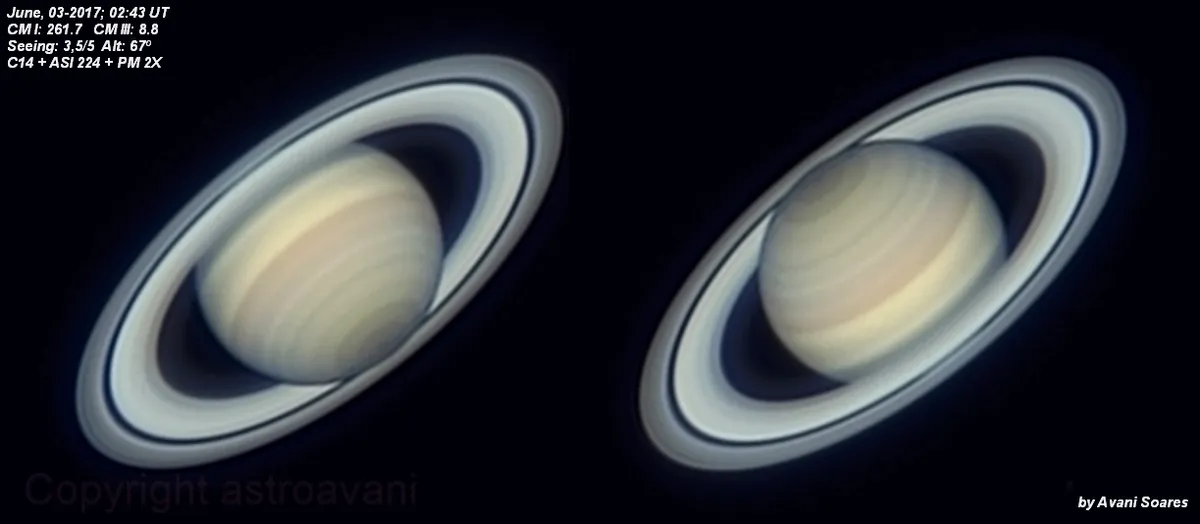
Shadows and spots
When making a drawing, take care of the shadows cast by the rings on the planet and by the planet on the ring system.
The shadow on the rings is never as dark as the black sky background, and the ring shadow on the globe is much darker than any of the belts.
Look too for any unusual spots on the disk; these can appear without any warning, and amateurs have a good chance of discovering them.
The great white spot of 1933 was found by WT Hay, who may be remembered as Will Hay, the stage and screen comedian.
In 1960 I found a white spot; I was using my 12.5-inch (32cm) reflector, and I was excited – but, sadly, the spot did not develop.
A bright white spot was found by an amateur, S Wilber in 1990; it remained for some weeks.
Remember, Saturn is always changing, and overall, the vast globe is less dense than water.
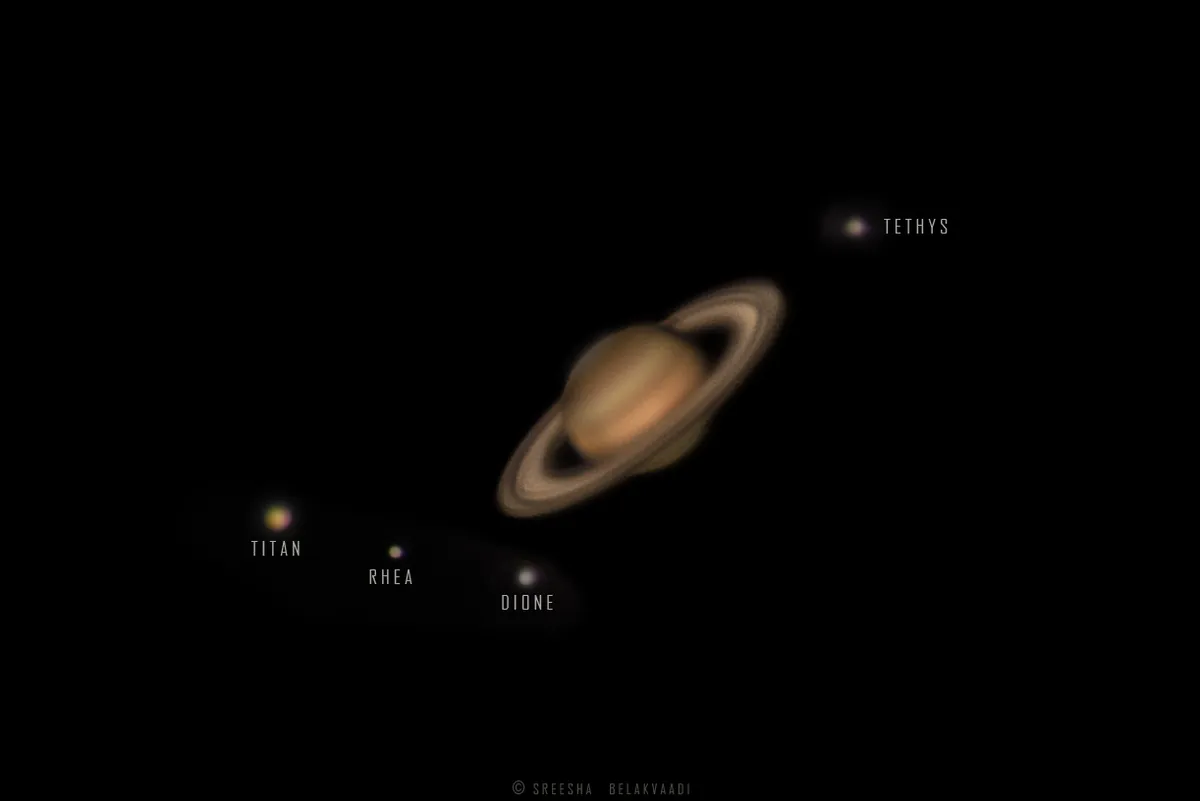
Sreesha Belakvaadi, Bangalore, India, 1 May 2021
Equipment: ZWO ASI290MC colour camera, Celestron 9.25” SCT, iOptron CEM40 mount
Observe Saturn's satellites
Do not forget the satellites. Saturn is the planet with the most moons in the Solar System, but for visual observers they are often overshadowed by Jupiter's magnificent Galilean Moons.
But take time to seek out Saturn's moon. Titan, at magnitude +8, is easy to see with any small telescope, and Rhea, Dione and Tethys are by no means difficult.
The variable Iapetus is also easy enough when west of Saturn; when at eastern elongation its darker hemisphere is turned towards us, and the magnitude drops well below +11.
This article originally appeared in the February 2006 issue of BBC Sky at Night Magazine.
